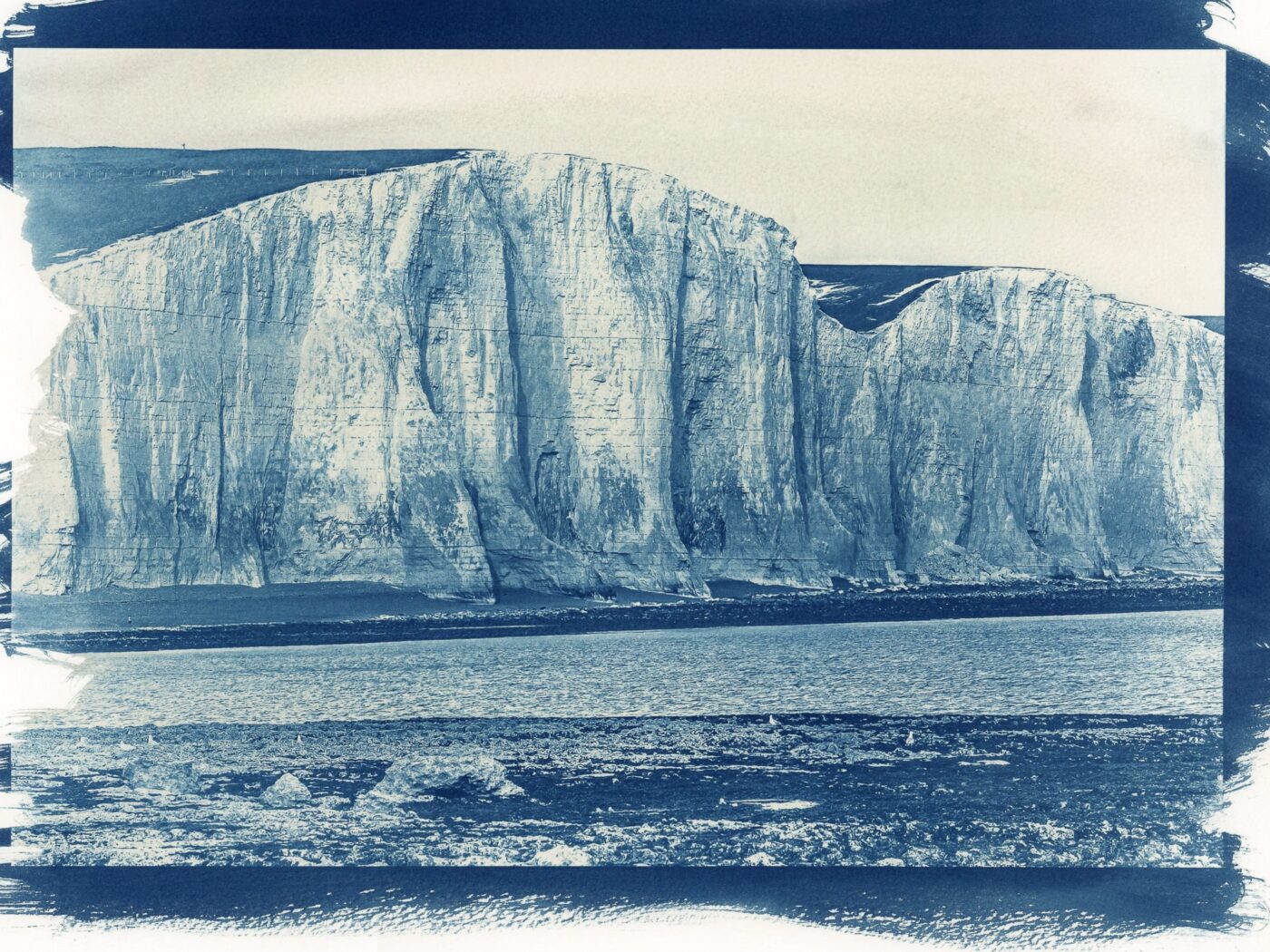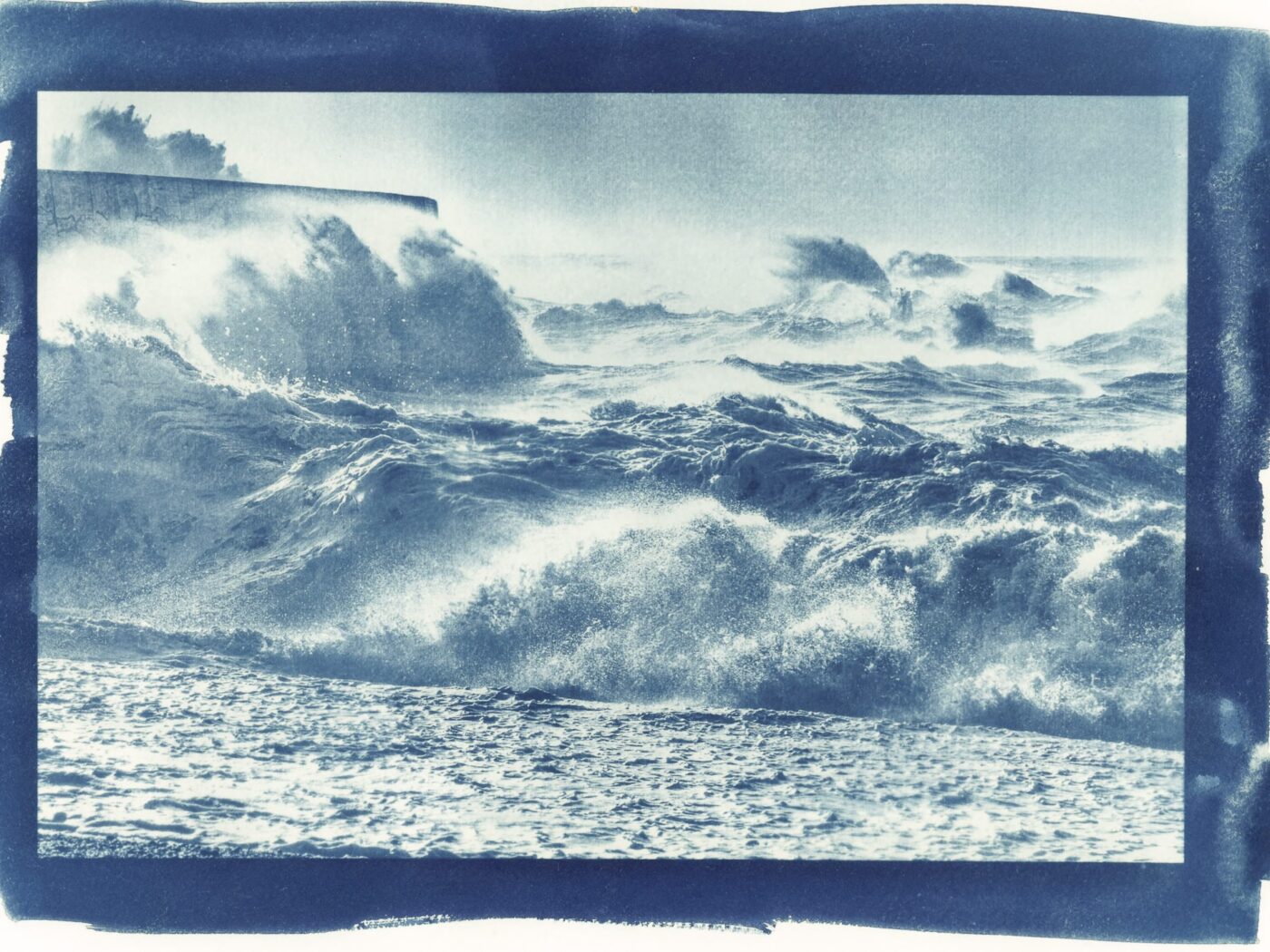Dazzled by Hope Gap
So, let us continue together on our cyanotype journey. After weeks and weeks stuck at home during lockdown, my family’s first joyous outing to a beach was to the aptly named Hope Gap near Seaford. It is along this Sussex coastline that the chalk hills of the South Downs hit the sea in steep dramatic cliffs.
The day was bright and still. An hour’s walk brought us to a gap in the rolling green scrubland. Opened out before us was a vista of sparkling sea, with the undulating Seven Sisters to the left and a headland rising straight out of the water to the right.
Down on the beach the tide was out and the cliffs loomed sharp and jagged, their white edges standing out against sky. I felt moved nearly to tears at the startling beauty of it all.
I had been working doggedly on my storm cyanotypes over many lockdown hours when I began to think about using the technique for other types of landscape photographs. The process is tricky and it is difficult to predict how a photograph will translate from computer screen to hand-made print.
For many photos, it doesn’t really work, but for some, the tonal qualities of cyanotype heighten the feelings I want to convey in a photograph. This mightiest of the Sisters is called Haven Brow and towers 77 meters (253 ft) above Cuckmere Haven. The cyanotype process helps to convey what I wanted here – a sense of the majesty of this cliff face.
You can find a selection of my cyanotypes here and learn how I create them here.This new work will be exhibited in September in a joint exhibit with artist Kelly Hall as part of the Lewes District Artwave Festival.

